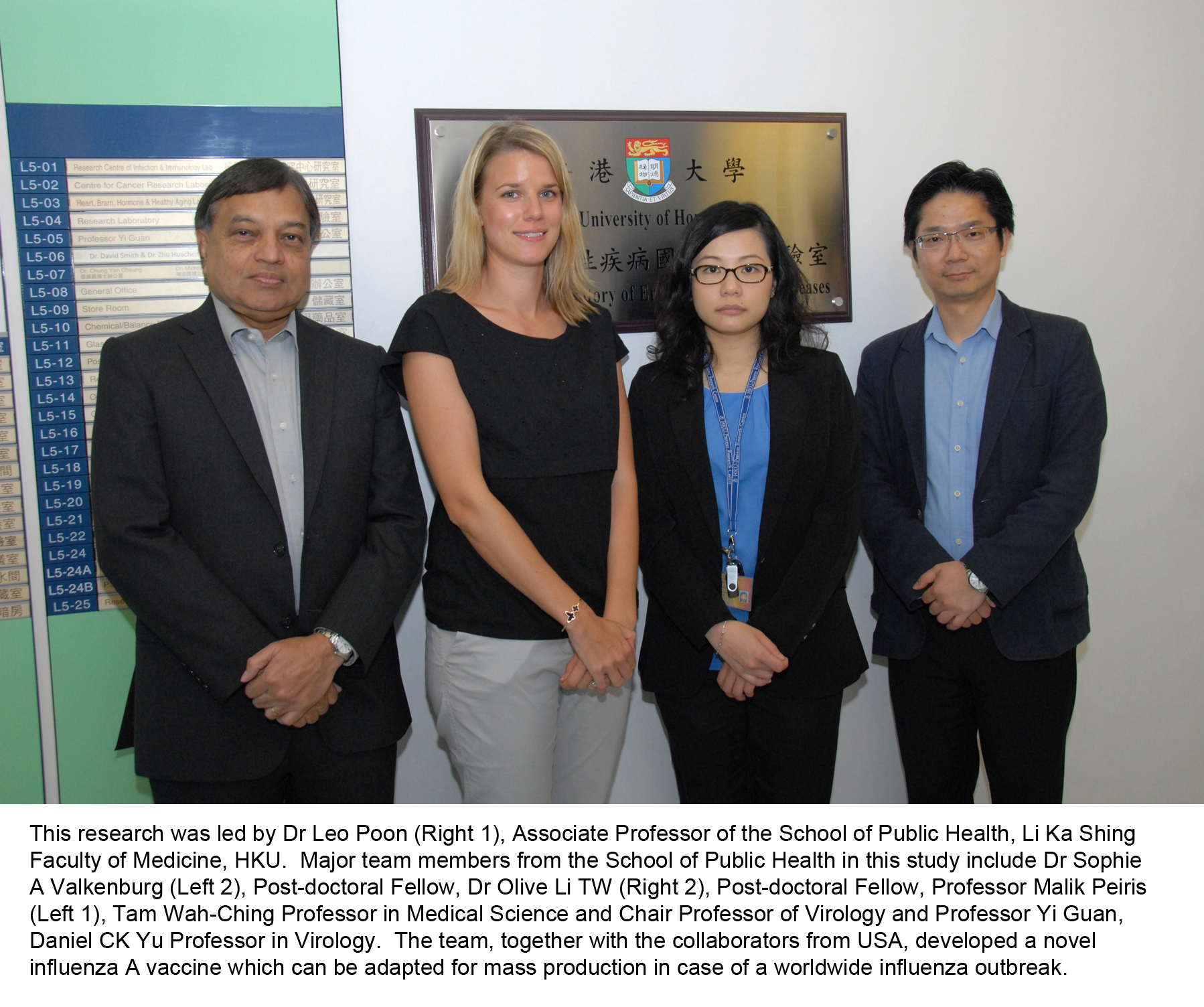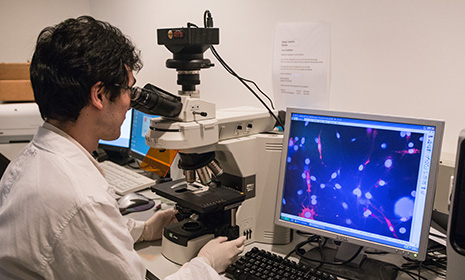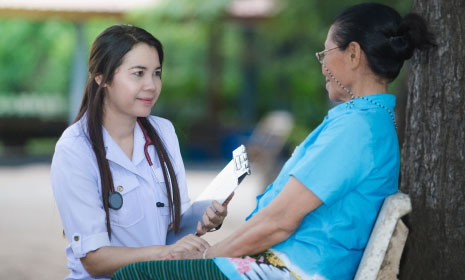HKU develops a universal influenza A vaccine that can elicit protective immune responses against viruses of multiple HA subtypes
A research team, led by Dr Leo Poon, Associate Professor of the School of Public Health, Li Ka Shing Faculty of Medicine, The University of Hong Kong (HKU), in collaboration with the National Cancer Institute, National Institutes of Health, United States of America (USA), has developed a novel influenza A vaccine that can induce protective responses against distinctly different influenza A viruses in mice, including the avian H7N9 virus. The study has been published this morning (April 1, 2014) in an international scientific journal, Proceedings of the National Academy of Sciences of the United States of America.
Research Implications
The research team has developed a novel vaccine against influenza A viruses. In the vaccine, a live recombinant vaccinia virus (Wyeth/IL-15/5Flu) that expresses multiple H5N1 influenza viral proteins and the cytokine IL-15 is used to stimulate robust immune responses. The vaccinia virus is useful as it is also used as a vaccine for smallpox, and is therefore already licensed for human use with over a billion doses given so far. The vaccine can be adapted for mass production in case of a worldwide influenza outbreak.
The novel influenza A vaccine is able to induce T-cell immune responses against influenza A viruses of different hemagglutinin (HA) subtypes, overcoming the limitations of the current seasonal vaccines. These immune responses can provide protection against lethal challenge of influenza A viruses by reducing the amount of viruses and the duration of illness. In addition, vaccine-induced CD4+T cells that coordinate immune responses are found to be more important than CD8+T cells in inducing protection. These results reveal an important yet underappreciated role of CD4+T cells in initiating cross-reactive protection against influenza A viruses. Overall, this vaccine provides a promising strategy for universal protection against new and emerging influenza viruses.
Study method and findings
A novel influenza A vaccine was developed using the immunogenic live vaccinia virus as a vaccine vector, expressing five different H5N1 viral proteins together with cytokine IL-15 as a molecular adjuvant. This vaccine was previously demonstrated to be capable of inducing robust protection in mice against different H5 influenza A viruses of the same group. In this study, the use of this unique vaccine was extended to mediate heterosubtypic immunity towards viruses of different subtypes. The vaccine protected mice against the fatal attacks by the most recent human H7N9, seasonal H3N2, pandemic H1N1/2009, and highly pathogenic H7N7 influenza A viruses. Cross-reactive influenza-specific CD4+ and CD8+T cell responses that were elicited by the vaccine were effectively recalled and amplified following viral challenges in the lungs and around the body. Removal of some T-cell subsets (e.g. CD4+ and/or CD8+ cells) in the immunised mice revealed an important role of CD4+T cells in providing protection. This study illustrates the potential use of this multivalent Wyeth/IL-15/5Flu as a universal influenza A vaccine.
Background
An influenza pandemic caused by a novel strain of influenza A virus that is virulent and highly transmissible among humans will be of great global concern. While current commerical influenza vaccines are ineffective against novel viral subtypes, such as H5 and H7 influenza viruses, the strain of the next outbreak of influenza is still unpredictable. Therefore, the development of an effective universal vaccination strategy is urgently needed. Specifically, it is essential to improve influenza vaccines by utilising multiple arms of the immune system.
About the research team
This research was led by Dr Leo Poon, Associate Professor of the School of Public Health, Li Ka Shing Faculty of Medicine, HKU. Major team members from the School of Public Health in this study include Dr Sophie A Valkenburg, Post-doctoral Fellow, Dr Olive Li TW, Post-doctoral Fellow, Professor Yi Guan, Daniel CK Yu Professor in Virology and Professor Malik Peiris, Tam Wah-Ching Professor in Medical Science and Chair Professor of Virology. The international collaborators are Dr Liyanage P. Perera and Dr Thomas A. Waldmann at the National Institutes of Health, USA.









.png)
